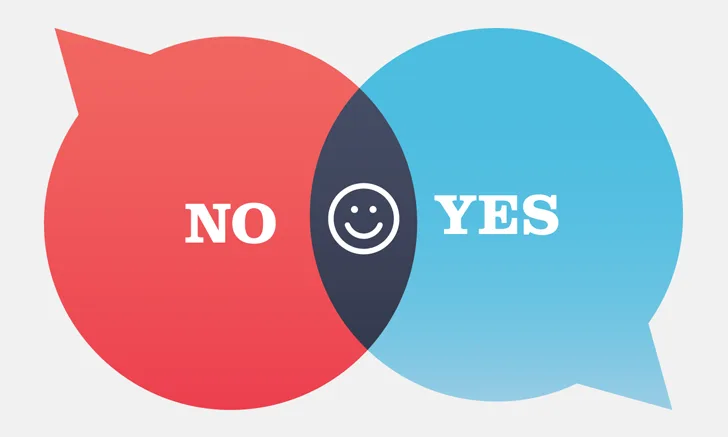A Better Way to Say No
Debbie Boone, CVPM, 2 Manage Vets Consulting, North Myrtle Beach, South Carolina

Human brains are naturally wired to avoid rather than confront conflict, which made sense when we were cavemen running from animals who considered us a tasty snack. Today, however, confrontation is often necessary to maintain mental and physical health in our professional and personal lives. Knowing how to say No can be crucial for emotional and physical wellbeing.1
Why No Is Necessary
Veterinary support groups have revealed disheartening examples of poor treatment of veterinary team members2:
Verbal attacks by unhappy clients with unreasonable demands
Team members expected to work long hours without food or bathroom breaks
Team members receiving no discipline when they behave badly, which impacts other team members
Clients taking advantage of the team's love of animals so the practice will waive payment
Disrespectful treatment and team member's inability to speak up about it often affects their health,2 so much so they may resort to self-harm, find another job, or even leave the veterinary profession completely.
The Correct Approach
When the authors of Crucial Conversations explored how some people are able to speak up and resolve emotionally charged situations, they found emotional control was the difference.1
People who can control their emotions do not automatically see others as malevolent—rather, they observe situations and approach them with inquiry rather than accusation. Observation will often show that something said with no harm intended was perceived wrongly, but controlling emotions allows time to consider the conflict and the conversation and not jump to conclusions.1
Self-control takes practice and a realization that your body works against you by sending adrenaline to the brain and hijacking rational thought when you feel attacked. Knowing this, think with logic instead. Stop, breathe, and relax. No one can make you angry but you.
Saying No Correctly
First, find out why your team member or client is saying or doing what you perceive as difficult by asking yourself, Why does she want what she wants? Here is the correct way to say No to some common problems.
Unreasonable Client Requests
When a client requests that the practice stay open late so she can pick up her boarded pet, for example, instead of a confrontational We close at 5, inquire, Mrs. Jones, may I ask why you need us to stay after closing? She may be delayed in traffic and be just a few minutes late. Waiting for her would not be a huge inconvenience, and she will likely remember the good service.
If the delay is significant, say, I apologize that no one stays at the practice that late, but I understand the frustration of traffic delays and would be happy to board Spot overnight for you. I will personally give him an extra treat before I leave.
No Lunches or Bathroom Breaks
Team members need these breaks, yet they often feel they cannot go against the veterinarian's order and say, I have to go to the bathroom. The correct way to handle this situation is to calmly address leadership at an appropriate time: May I ask you a question? Would you be open to talking about some things that may help keep team members? You may not be aware that many days most team members do not feel they have time to eat lunch or even go to the restroom. You always say we are important, so could we work on a schedule that would allow breaks? Owners hate turnover, and finding a solution is a mutual win.
Behaving Badly
A fellow team member constantly vents her frustration about a client whom she thinks does not care enough for his pet; however, her venting tends to negatively affect the energy of the team, even though they agree with her. Another team member should calmly and in private approach her colleague and say, May I ask you something? Do you think speaking harshly about our client makes our team feel better or worse? Would you consider being kinder to clients rather than judging them so harshly? I appreciate your passion for our patients, but clients need our compassion, too.
Clients Who Cannot Pay
Showing empathy is most important in these situations. Say, Mr. Smith, I completely understand your frustration. I know Fluffy is an important member of your family and you want to do what is best. Would you mind telling me the budget you have to work with? We can offer several financing options through outside providers, and I am happy to help you with those options. Let us work together to see what we can do.
In all these situations, No was said firmly, but with respect, empathy, and kindness. Saying No is much easier when you keep cool, avoid a quick reaction, strategize, and seek a mutual win.
Conclusion
Always try to find common ground by learning where the other person is coming from and then, if necessary, giving yourself permission to object or refuse. Also, always think—never assume. Correctly saying No shows you are looking for a collaborative solution, not trying to win a war. (See Saying No Correctly.) In John Steinbeck's words: All war is a symptom of mans failure as a thinking animal.